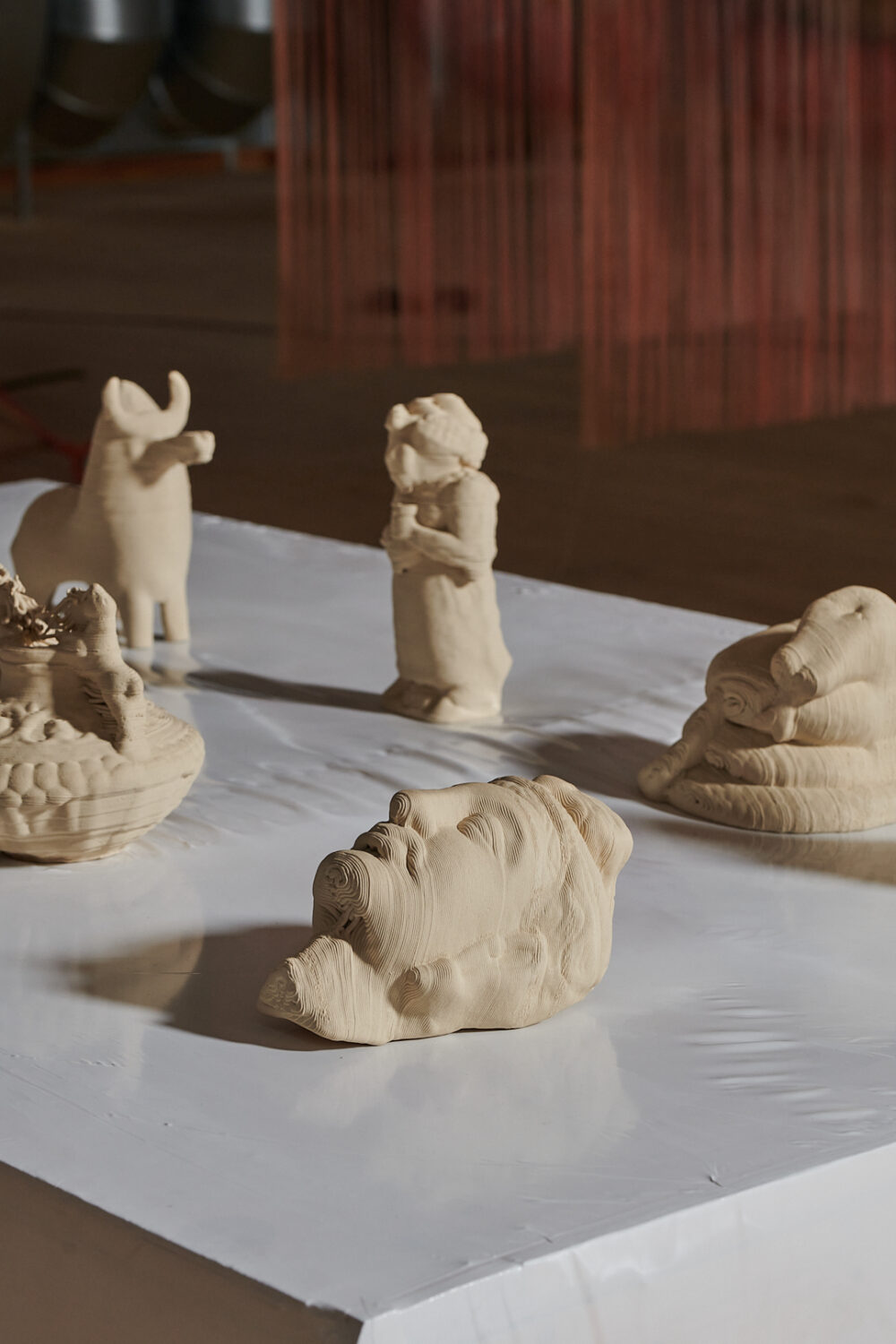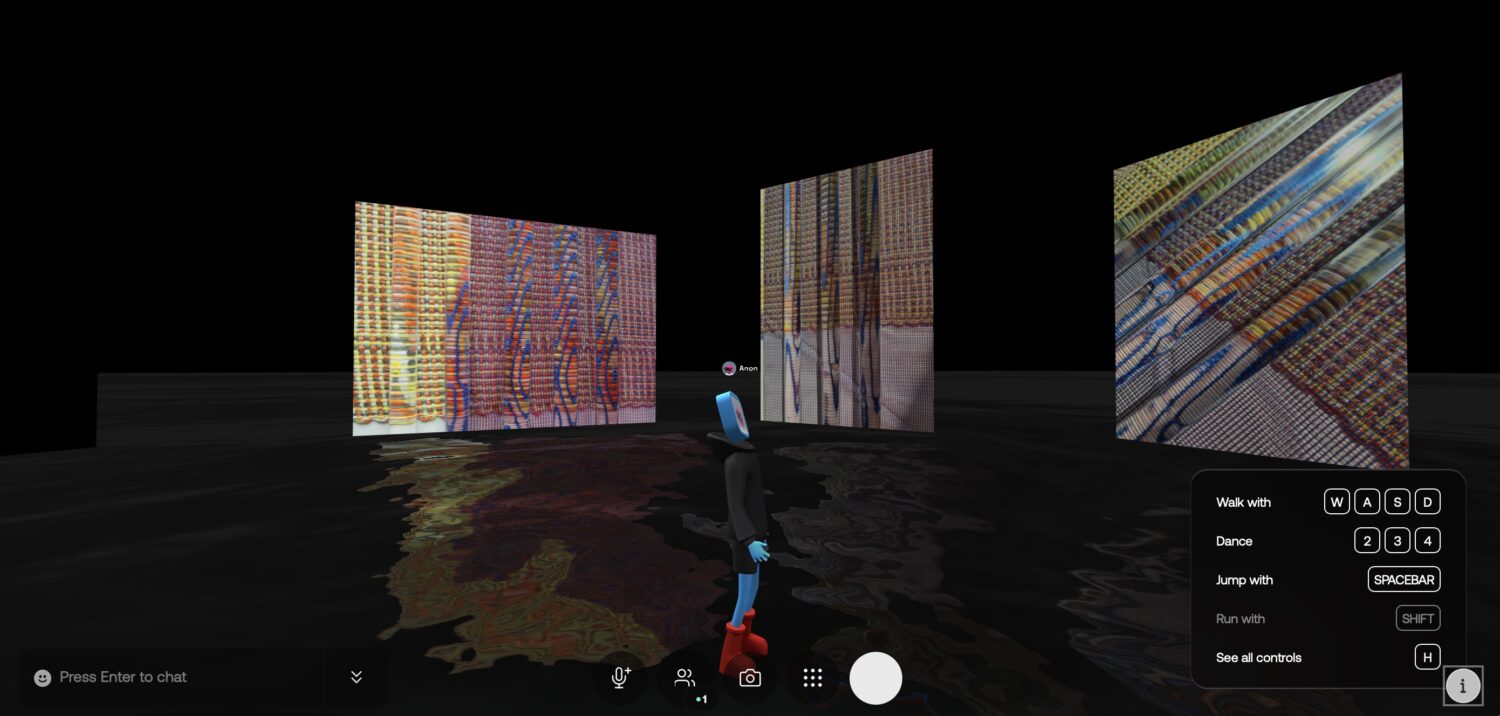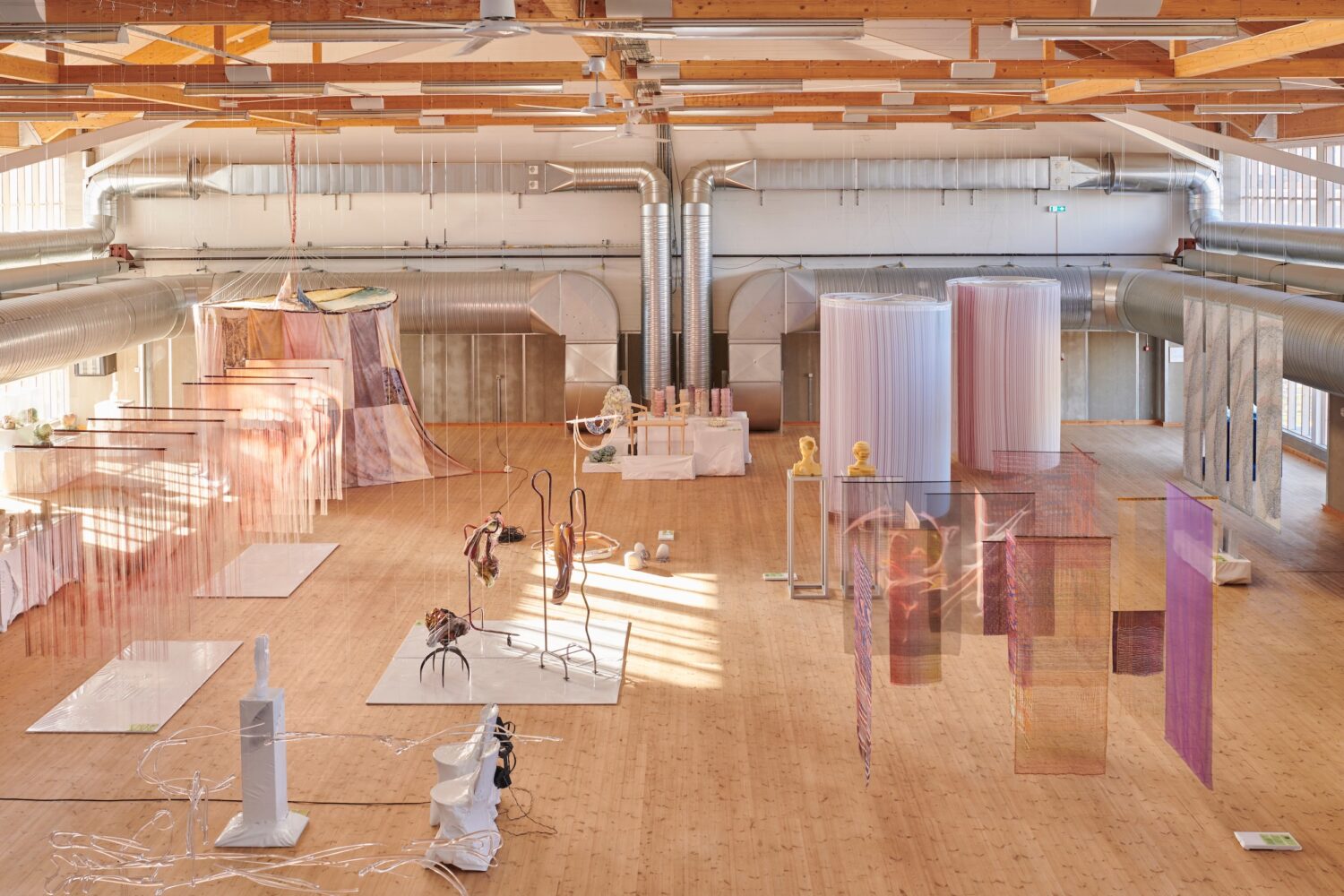“The time has come to reflect on what happens in the transition from the physical to the digital. Are the once-clear boundaries between our physical and digital worlds beginning to dissolve?”
Such is the description of this year’s theme for the Craft & Design Biennale. The theme is summarized with the slightly bland and vague title “Conversion”. Regardless of the choice of words, the exhibition aims to illuminate the relevance of the digital in this domain.
From the organizers, I gathered that the theme has sparked some debate amongst potential exhibitors. Naturally, some artisans view the work of the hand as the most essential in their practice. And some feel they have been excluded from a significant platform, of which there aren’t many in a Danish context. The chairperson for the Danish Craftsmen & Designers, Hanne B. Sønnichsen, did spend a good portion of her opening speech defending the theme choice. Yet, it’s surprising that it’s necessary in an era where the digital is so ubiquitous and rapidly evolving. Of course, it’s a relevant theme. I believe it’s out of touch to argue otherwise. In a way, it almost feels old-fashioned to thematize the digital. It has become such an integral part of our daily lives, our work, our relationships, and our society, that it should be considered a fundamental premise.
Moreover, meaningful theming will inevitably exclude some. Perhaps another year the biennale might explore the non-digital, thereby sidelining several digitally based practices. That would be a refreshing theme.
Actually, I would argue that it might have been beneficial to exclude a few more. Not because the exhibition feels overcrowded. Curator Anne Thomasen has done a truly thorough and concise job with the distribution of works in the space. And Copenhagen Contemporary provides an uplifting setting. The practical curation is beautifully executed.
My objection stems from the fact that a good handful of the works on display do not engage with the digital. While these are indeed excellent pieces of very high quality, they simultaneously are pieces that aren’t relevant to the theme. The exhibition would have benefited had they dared to make tougher exclusions and further tightened the concept in their open call.
Having said that, I would wholeheartedly recommend readers to visit the exhibition before it closes on November 12th.
Biennale Prize 2023
I had the pleasure of being on the prize committee for the Biennale, alongside craftsman Kristine Tillge Lund and curator Majken Overgaard. This allowed me to thoroughly experience the 36 projects the exhibition showcases. And the standard is high.
The Biennale Prize was awarded to Wang and Söderström for their project, The Liminal Eatery. It’s a 3D-printed, colourful, and fully realised installation featuring two chairs and a dinner table set with utensils and mysterious sculptures. Alongside the installation, there are also VR goggles, leading to a parallel virtual world where two alien-like figures partake in the meal.
The work opens up debates about sensuality in a digital world. What does it mean for our bodily experience as we increasingly move in a digital reality?
It’s a pertinent question, and Wang and Söderström address it with precision and a healthy dose of humour.

In our deliberations, we emphasized selecting works that related to the exhibition’s theme in an interesting and original manner. I was particularly drawn to projects where the digital was employed seamlessly.
Seamless. I’ve always found it a peculiar word, but it’s returned to me multiple times when describing a virtuoso use of the digital. In my eyes, it’s a frictionless and natural application.
Frictionless in the sense that the digital often entails difficulties in the experience of the work:
How do I turn this on?
Oops, this doesn’t seem to work…
You’ll need to download this first before you can…
Fortunately, such issues are becoming less common in recent years. In the frictionless use of the digital, the technical aspect becomes an invisible factor that just works and which one intuitively understands how to use.
Not Just an Extra Layer on Reality
The seamless application is characterized by the fact that the digital is not just an added layer on reality, but a necessity to conceive and realize the idea behind the project.
Tideland Studio’s project “The Stolen Collection” serves as a prime example. The work comprises nine ceramic pieces. Each piece is a replica of a stolen cultural heritage object from the Middle East that has recently been sold on eBay.
In a kind of digital archaeology, they’ve located these objects and created 3D models based on the eBay documentation and with the aid of artificial intelligence. They then recreated these objects in 3D-printed ceramics, thereby preserving them before they vanished into private art collections.

Endless Possibilities of Effects
At times, I find that some are fascinated by the endless effects the digital offers, but aren’t quite sure how or why they should employ them. Part of this fascination is evident in the exhibition. Both in some of the projects but also in the setting of the exhibition itself. It was decided that each participating project should create a metaverse exhibition, accessible via the biennale’s website. The result was quite frictionless, but the overall impression was underwhelming, and the seamless nature occasionally faltered.

Perhaps my sense of being underwhelmed stems from the fact that technology is advancing so rapidly it’s hard to keep track of what’s possible. I sometimes forget that it was only a year ago that OpenAI released the first version of ChatGPT. I actually had to look it up to be sure. With the advent of artificial intelligence comes a feeling that everything is possible and even easy, even though that isn’t always the case in reality. We’re becoming harder and harder to impress, and we increasingly take some pretty astounding possibilities for granted.
In that light, I sensed untapped potential in several of the projects. The exhibition serves as a good showcase of how VR, 3D, and AI function in the works of craftsmen and designers – and perhaps even more so, how they could function in the future.
Facts
Every other year, the Biennale highlights contemporary Danish crafts and design with a robust educational program, an Open Call exhibition, and the coveted Biennale Prize of 100,000 DKK, generously donated by the Denmark’s National Bank Anniversary Foundation. Each Biennale is tied to a highly relevant theme, ensuring the crafts’ professional development and societal relevance.
Exhibition period: 13th October – 12th November 2023
Location: Copenhagen Contemporary, HALL 6, Refshalevej 173 A, 1432 Copenhagen K
On 1st November, the symposium ‘Crafting Realities’ will be held at The Royal Academy. The symposium marks the beginning of Formkraft’s upcoming theme on digital craft. Learn more
More Knowledge in the Archive
Formkraft holds a vast digitized archive of magazines from 1948-2009, as well as exhibition catalogues for the Craft & Design Biennale from 1995-2021. Read the magazines and exhibition catalogues here.


